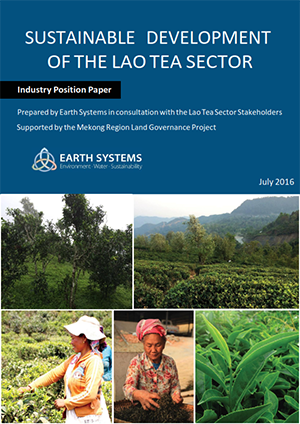Exploring Opportunities for Smallholder Tea Producers in Laos
This short video examines an initiative by Earth Systems to develop a tea sector dialogue platform that brings together key stakeholders in the value chain to jointly examine challenges and opportunities for the development of a more equitable and sustainable tea sector in Laos. The video highlights the outcomes and lessons from a tea stakeholder workshop held in Phongsaly province, northern Laos, in July 2016.









